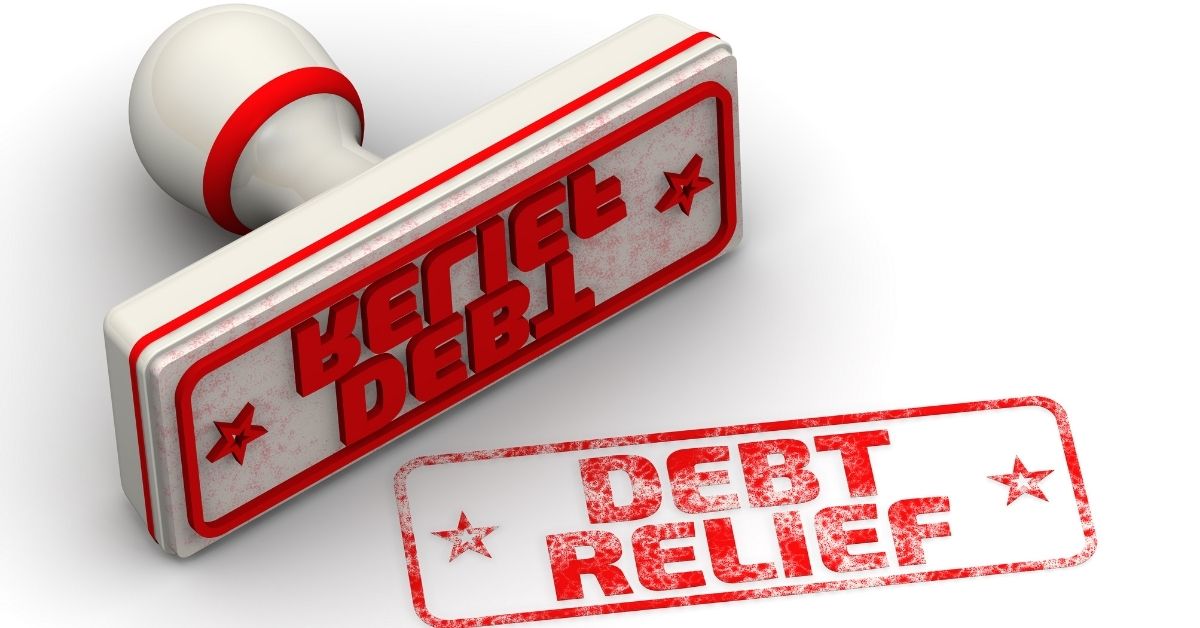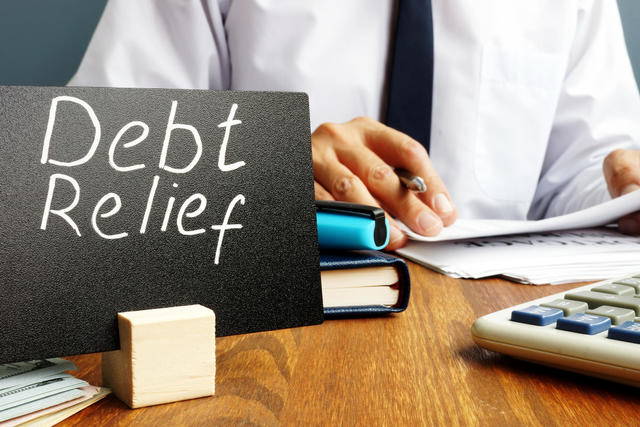
==> See Our #1 Recommendation for Debt Relief Programs Here! <==
Debt can often feel overwhelming; however, comprehending available options for relief can provide a pathway to financial freedom. This article examines the concept of debt relief, detailing the various types available, including debt consolidation, settlement, and bankruptcy, as well as how to evaluate one’s need for assistance.
Need to know how to apply for debt relief? We will provide a comprehensive overview of the application process and outline what to expect throughout this journey, equipping readers with the knowledge necessary to regain control over their finances.
Are you prepared to take the first step?
What Is Debt Relief?
Debt relief encompasses a range of strategies and programs intended to alleviate financial stress resulting from debts that individuals may find difficult to manage due to unforeseen financial hardships. This may include various approaches such as debt settlement, loan modification, bankruptcy, and the support of credit counseling services.
These initiatives aim to relieve individuals from the substantial burden of unsecured debt, reduce obligations to creditors, and ultimately enhance overall financial well-being.
What Are The Types Of Debt Relief?
A comprehensive understanding of the various types of debt relief can enable individuals facing financial difficulties to select the most appropriate solution for their specific circumstances.
Available options include:
- Debt consolidation, which involves the combination of multiple debts into a single loan;
- Debt settlement, in which creditors agree to accept an amount less than the total owed;
- Bankruptcy, a legal process designed to provide a fresh start by discharging certain debts.
Additionally, there are financial assistance programs aimed at effectively managing repayment plans.
1. Debt Consolidation
Debt consolidation is a financial strategy that entails combining multiple unsecured debts into a single loan, typically at a lower interest rate, thereby simplifying the repayment process. This method is advantageous for individuals who seek to streamline their payments and reduce their overall financial obligations, which facilitates the management of monthly expenses and enhances financial well-being.
Through debt consolidation, individuals can utilize various methods, such as personal loans that offer a fixed payment schedule or balance transfer credit cards that provide periods of interest-free repayment. These options often result in lower monthly payments and may create a pathway to an improved credit score over time, as reducing outstanding debt can positively affect credit utilization ratios.
Eligibility for these options generally depends on factors such as creditworthiness, income stability, and the total amount of debt. Incorporating debt consolidation into a comprehensive debt management strategy not only simplifies repayment but also fosters responsible financial habits, potentially leading to long-term fiscal health.
2. Debt Settlement
Debt settlement involves negotiating with creditors to reduce the total amount of debt owed, often resulting in a lower lump-sum payment that alleviates financial burdens for individuals. This process can serve as a viable solution for those experiencing significant financial hardship who wish to avoid bankruptcy while pursuing financial recovery through customized settlement agreements.
During the debt settlement process, consumers typically collaborate with a settlement company or negotiate directly with creditors to arrive at a mutually agreeable resolution. By demonstrating genuine financial hardship, they may persuade creditors to accept a payment that is less than the total balance owed.
It is important to recognize that while successfully settling debts can reduce financial stress, it may adversely impact one’s credit history. This approach can lead to a decline in credit scores, which may require time to restore. Therefore, individuals should carefully evaluate the potential risks in relation to the benefits, particularly in light of the implications for their creditworthiness and future borrowing capacity.
3. Bankruptcy
Bankruptcy is a legal process that provides individuals burdened by debt with an opportunity for a fresh financial start. This process allows for the discharge of certain financial obligations, enabling individuals to regain control over their finances. Typically, bankruptcy is considered a last resort during a financial crisis and can have a considerable impact on one’s credit report and future financial obligations.
There are two primary types of bankruptcy that individuals may consider: Chapter 7 and Chapter 13. Chapter 7, commonly known as liquidation bankruptcy, allows for the discharge of unsecured debts but may result in the loss of non-exempt assets. Conversely, Chapter 13 involves the establishment of a repayment plan to manage debts over a specified timeframe, usually between three to five years, thereby allowing individuals to retain their assets.
Eligibility for Chapter 7 is determined by income and means testing, while Chapter 13 generally requires the individual to have a stable income to facilitate consistent payments. Both options can lead to a significant decline in credit scores, which may persist for several years. Thus, seeking legal advice is essential to navigate these complexities and ensure that the appropriate choice is made in light of one’s financial circumstances.
How To Determine If You Need Debt Relief?
Determining the necessity for debt relief requires a thorough assessment of one’s financial situation, which includes evaluating the debt-to-income ratio, credit score, and monthly payment obligations.
If an individual’s debt responsibilities exceed their income or adversely affect their credit history, it may be prudent to consider debt relief options. Such measures can assist in alleviating payment difficulties and restoring financial stability.
1. Your Debt-to-Income Ratio
The debt-to-income ratio is a critical financial metric that compares total monthly debt payments to gross monthly income, serving as an assessment of an individual’s capacity to manage financial obligations. A high debt-to-income ratio may indicate potential financial strain, suggesting that debt relief options should be explored to regain control over budgeting and financial health.
Calculating this ratio involves dividing total recurring monthly debt by gross monthly income and then multiplying by 100 to express it as a percentage. This figure is significant during financial assessments, as it assists lenders in determining creditworthiness; typically, a ratio exceeding 43% may raise concerns.
Financial advisors frequently recommend maintaining a ratio below 36% for effective financial management. Understanding this ratio not only facilitates well-considered choices regarding debt relief options but also serves as a guiding tool in budgeting strategies to enhance overall financial stability.
2. Your Credit Score
A credit score serves as a reflection of an individual’s financial history, significantly influencing their ability to secure loans and negotiate favorable terms with creditors. A low credit score may indicate payment difficulties or outstanding debts, underscoring the necessity for debt relief strategies to enhance prospects for financial recovery.
It is essential to understand the various components that impact credit scores. Factors such as payment history, credit utilization ratio, length of credit history, new credit inquiries, and types of credit collectively play a substantial role in determining one’s creditworthiness.
Regularly reviewing credit reports is equally important, as it enables individuals to identify potential errors or fraudulent activities that could adversely affect their scores.
To improve credit ratings, individuals should consider the following actions:
- Consistently making on-time payments
- Reducing outstanding debts
- Maintaining a low credit utilization ratio
Exploring debt relief options can result in more manageable payments, ultimately leading to improved credit scores over time and creating opportunities for enhanced financial prospects.
3. Your Monthly Payments
Evaluating monthly payments is critical for assessing financial stability and the capacity to meet ongoing obligations without incurring additional debt. Difficulties in adhering to payment plans may signify the necessity for effective debt management strategies or debt relief options to alleviate financial strain.
By systematically tracking monthly expenses, individuals can differentiate between essential and discretionary spending, thereby prioritizing necessary bills such as rent, utilities, and groceries. A well-structured budget serves as a valuable tool for enhancing financial health, providing clarity and control over spending habits.
Consolidating multiple debts into a single payment can streamline financial management, while seeking assistance from financial counseling services can offer personalized support tailored to specific circumstances, enableing individuals to navigate the complexities of debt with assurance.
How To Apply For Debt Relief?
Applying for debt relief involves a series of steps, beginning with a comprehensive assessment of one’s financial situation to identify the most appropriate options. This process necessitates the collection of relevant documentation and a thorough understanding of the various debt relief programs available.
Additionally, it may be beneficial to consult with credit counseling services to obtain professional guidance throughout the process.
1. Assess Your Debt Situation
Assessing one’s debt situation represents the initial and critical step toward identifying a suitable debt relief solution. This process involves a comprehensive evaluation of all outstanding debts and financial obligations. A thorough understanding of the total amount owed, associated interest rates, and payment schedules is essential for developing a realistic budget and repayment plan.
To initiate this process, it is important to create a detailed list of all debts, including credit cards, loans, and any other financial responsibilities. Subsequently, one should evaluate the interest rates linked to each debt, as those with higher rates require more immediate attention.
Once a clear overview of the debts is established, it is prudent to consider potential challenges, such as fluctuating interest rates or economic changes that may affect payment capabilities. Regularly revisiting the budgeting strategy and incorporating practical measures, such as reducing unnecessary expenses and prioritizing essential bills, can significantly enhance one’s financial outlook while managing these obligations effectively.
2. Research And Compare Debt Relief Options
Researching and comparing various debt relief options is crucial for identifying a solution that aligns with one’s financial needs and long-term goals. This process involves understanding the different debt relief programs available, evaluating credit counseling agencies, and seeking legal advice when necessary to navigate complex financial situations.
Individuals should dedicate time to assess how these options may affect their credit scores and overall financial health. It is essential to weigh the advantages and disadvantages of each potential path, such as debt consolidation versus bankruptcy, as each presents distinct outcomes.
To facilitate this exploration, a variety of resources are accessible, including financial literacy websites that offer comprehensive insights on managing debt, as well as consumer credit forums where personal experiences and advice can be exchanged. Engaging with these resources enables individuals to make informed decisions tailored to their unique circumstances.
3. Gather Required Documents
Gathering the necessary documents is a critical step in the debt relief application process, as it ensures that you provide the essential information to support your case. Commonly required documents include income verification, financial statements, and a comprehensive list of your debts, all of which contribute to a more efficient application process.
By organizing these documents effectively, you can present a clearer representation of your financial situation to the reviewing authority. It is advisable to compile recent pay stubs, bank statements, proof of any assets, and tax returns, as these documents can substantiate the legitimacy of your application.
Maintaining transparency throughout this process is fundamental, as it not only fosters trust but may also expedite your request, demonstrating your commitment to responsibly addressing your financial challenges. Ensuring that all paperwork is accurate and complete is vital, as any missing documentation could result in delays or even the denial of your application.
4. Contact A Debt Relief Company Or Credit Counselor
Engaging with a reputable debt relief company or credit counselor is a crucial step toward achieving financial wellness and obtaining customized solutions for one’s debt situation. These professionals are equipped to assist in negotiations with creditors, explore available assistance programs, and outline practical repayment plans to effectively manage debt.
It is essential to approach this process with diligence and caution. Individuals should begin by researching companies that have established a solid track record of success and possess positive reviews.
It is advisable to be vigilant for red flags, such as exorbitant upfront fees, promises of guaranteed results, or any pressure tactics. During initial consultations, individuals should inquire about the company’s credentials, fee structure, and the specific services offered.
Acquiring an understanding of their methodology and the support available can foster confidence in the decision-making process. Seeking professional assistance can significantly alleviate the burdens associated with debt negotiation, facilitating a more organized pathway toward financial stability.
5. Submit Your Application
Submitting an application for debt relief constitutes a critical step in the process, whereby an individual presents their financial situation alongside proposed solutions to the relevant debt relief programs. It is imperative to ensure that all required forms are completed accurately and that the application clearly reflects one’s financial obligations.
Each debt relief option may entail different submission methods, which can range from online forms available on the program’s website to in-person consultations with financial advisors or debt counselors.
Gathering all necessary documentation, including income statements, bills, and credit reports, is essential for effectively supporting the application.
Upon submission, maintaining communication with both creditors and the agencies involved is vital, particularly regarding updates or requests for additional information. Regular follow-ups can facilitate the efficient processing of the application and ensure that the applicant remains informed about potential outcomes or requirements necessary to proceed.

What To Expect During The Debt Relief Process?
A clear understanding of the debt relief process can significantly reduce anxiety and facilitate navigation through its complexities. This process typically involves negotiations with creditors, the establishment of structured payment plans, and may include financial counseling sessions designed to promote long-term debt recovery and overall financial wellness.
1. Negotiations With Creditors
Negotiations with creditors represent a critical aspect of the debt relief process, during which individuals or their representatives engage in discussions regarding payment alternatives to arrive at a mutually beneficial resolution. Successful negotiations may lead to reduced debt amounts, modified payment terms, and formal agreements with creditors that facilitate financial recovery.
To effectively navigate these discussions, it is imperative to prepare thoroughly by reviewing one’s financial situation and understanding the specifics of the debt incurred. Establishing open and honest communication fosters trust; therefore, approaching the meeting with a composed demeanor and a well-articulated plan contributes to a constructive atmosphere.
During discussions, it is essential to be prepared to clearly articulate any financial difficulties and propose realistic repayment options. Once an agreement has been reached, maintaining a positive relationship with creditors is of utmost importance. Regular communication regarding payment status or any potential issues can help prevent misunderstandings and support a more favorable long-term relationship.
2. Payment Plan Or Settlement Agreement
Establishing a payment plan or settlement agreement is a critical outcome of the debt relief process, as it delineates how debts will be repaid over time or settled for an amount less than what is owed. These agreements provide both structure and clarity, enabling individuals to manage their repayment obligations effectively while mitigating the risk of further financial difficulties.
It is essential to comprehend the distinctions between these two approaches. A payment plan generally permits individuals to make regular, manageable payments over an extended period, which can facilitate the gradual rebuilding of credit history.
Conversely, a settlement agreement typically necessitates a lump-sum payment to resolve debts, which may adversely affect credit reports and influence future borrowing capacity.
To successfully adhere to either agreement, individuals should establish a comprehensive budget, prioritize payments, and seek financial counsel to remain on track, ultimately fostering a pathway toward financial stability.
3. Credit Counseling And Financial Education
Credit counseling and financial education are essential components of the debt relief process, providing individuals with the necessary knowledge and tools to manage their finances effectively. By focusing on budgeting, debt management strategies, and financial literacy, individuals can establish a solid foundation for long-term financial well-being.
A variety of resources are available to support individuals on this journey, including workshops organized by nonprofit organizations, online courses, and interactive tools designed to enhance engagement and practical learning.
Many credit counseling services offer personalized one-on-one sessions tailored to address specific financial challenges, allowing individuals to refine their strategies. Given the importance of ongoing education, continuous learning equips individuals to adapt to evolving financial circumstances, ensuring they remain informed and enableed.
This proactive approach not only facilitates immediate comprehension but also fosters the confidence required to navigate future financial decisions effectively.
Frequently Asked Questions
What is debt relief?
Debt relief refers to a process in which a debtor is able to reduce or eliminate their outstanding debts through negotiation with creditors.
How do I know if I am eligible for debt relief?
Eligibility for debt relief depends on various factors such as the type and amount of debt, income, and assets. It is best to consult with a debt relief specialist to determine your eligibility.
What are the different methods of applying for debt relief?
Some common methods of applying for debt relief include debt settlement, debt consolidation, and debt management plans. Each method has its own process and requirements, so it is important to research and choose the best option for your situation.
Can I apply for debt relief on my own?
Yes, you can apply for debt relief on your own by negotiating directly with your creditors. However, it can be a complicated and time-consuming process, so many people opt to work with a debt relief agency or lawyer who can negotiate on their behalf.
What documents do I need to apply for debt relief?
The required documents may vary depending on the method you choose, but typically you will need to provide proof of income, a list of your debts, and any supporting financial documents. It is best to consult with a debt relief specialist to determine the specific documents needed for your case.
Does applying for debt relief affect my credit score?
Yes, applying for debt relief can have a negative impact on your credit score. However, if you are struggling with overwhelming debt, your credit score may already be affected. The long-term benefits of debt relief, such as reducing or eliminating debt, can help improve your credit score in the future.
==> See Our #1 Recommendation for Debt Relief Programs Here! <==




